Do you suffer from herniated disc pain? Massage can be an effective way to relieve your discomfort and improve your mobility. In this article, you will discover how to massage a herniated disc and how to use massage to relieve pain naturally. We will also cover the different types of massage techniques that can be used to treat a herniated disc and how to find the right massage therapist for you. By the end of this article, you will have a better understanding of how to massage a herniated disc and how to begin relieving your pain naturally.
Contents
What is a Herniated Disc?
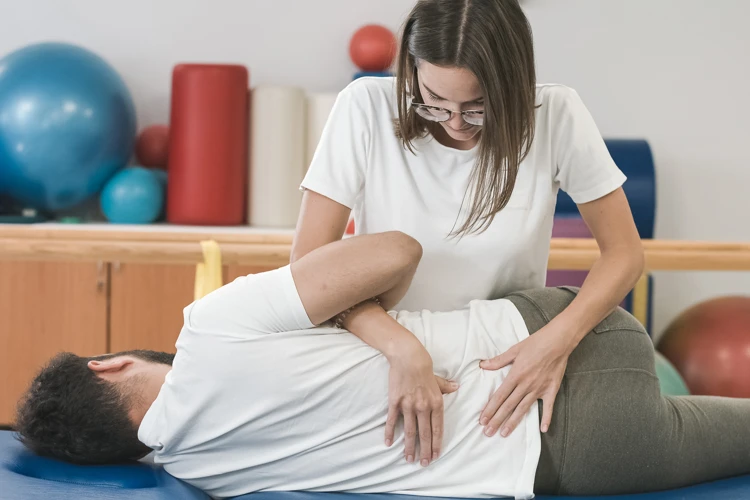
A herniated disc is a condition in which the inner core of a spinal disc is pushed out through a weakened area in the outer layer of the disc. This causes the disc to bulge, putting pressure on the surrounding nerves and causing pain and discomfort. The most common symptom of a herniated disc is pain in the lower back that radiates down the leg. Other symptoms may include numbness, tingling, and muscle weakness.
How to Massage a Bulging Disk in Lower Back
- Start by locating the area of pain. Place your hands on the area and gently massage the muscles in a circular motion with your fingertips.
- Once the muscles are relaxed, you can use your thumbs to massage the area in a more direct and firm manner. This will help to break up any adhesions in the muscles and the surrounding tissue.
- Continue to massage the area, focusing on any areas that feel particularly tender.
- Continue to massage the area for several minutes, or until the pain has subsided.
Causes of Herniated Discs
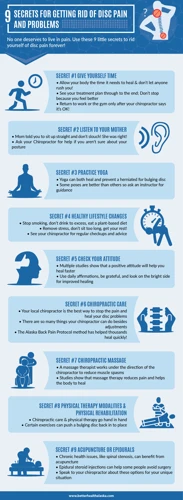
The most common cause of herniated discs is wear and tear on the spine. The discs that cushion the vertebrae of the spine are composed of a tough outer layer and a soft inner layer. Over time, the outer layer can become weakened, allowing the inner layer to protrude through the outer layer. This is known as a herniated disc. Other causes of herniated discs include:
| Cause | Description |
|---|---|
| Injury | A sudden injury or trauma, such as from a fall or car accident, can cause a herniated disc. |
| Age-Related Degeneration | As we age, the discs in our spine naturally start to degenerate and can become herniated. |
| Repetitive Stress | Repetitive activities, such as lifting heavy objects or twisting the back, can lead to a herniated disc. |
If you have a herniated disc, it is important to know how to massage a slipped disc in order to relieve the pain and discomfort.
Symptoms of a Herniated Disc
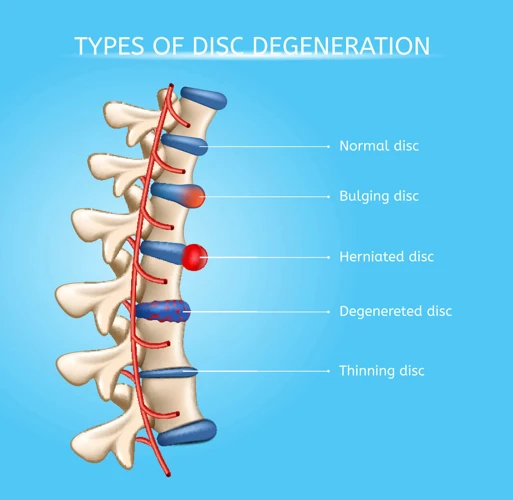
- Pain: Pain usually begins in the lower back and radiates down one or both legs, depending on the location of the herniated disc. Sciatica, which is a sharp, burning sensation, is common when the herniated disc is in the lumbar spine.
- Numbness and Tingling: This sensation is typically felt in the legs, feet, and arms. It is common to feel a pins-and-needles sensation, or a feeling of being “asleep.”
- Muscle Weakness: This can occur if the herniated disc is pressing on a nerve root, causing it to become irritated. Weakness can be felt in the affected muscles, usually in the legs and feet.
Massage therapy is an effective way to relieve the symptoms of a herniated disc in the lower back. Massage can help to reduce the pain and inflammation associated with the herniated disc and increase the range of motion in the affected area. Massage can also help to reduce stress and improve the overall functioning of the affected area. With the right massage techniques, you can learn how to massage a herniated disc and relieve pain naturally.
Massage Techniques for a Herniated Disc

Trigger Point Therapy
Trigger point therapy is a type of massage that involves applying concentrated pressure to tight muscle bands to reduce the pain and increase mobility. It is a great technique to help reduce the pain caused by a herniated disc. It is important to note that this technique should be done with a light touch.
Soft Tissue Massage
Soft tissue massage is a gentle form of massage therapy that is designed to increase circulation and reduce tension in the affected area. This type of massage is beneficial for relieving pain caused by a herniated disc, as it helps to relax the muscles and improve flexibility.
Myofascial Release
Myofascial release is a type of massage therapy that focuses on releasing the fascia, or connective tissue, surrounding the muscles. This type of massage helps to reduce pain and improve flexibility in the affected area.
Joint Mobilization
Joint mobilization is a type of massage therapy that uses gentle pressure to manipulate and stretch the joints. This technique helps to reduce pain and increase mobility in the affected area.
Acupressure
Acupressure is a form of massage therapy that uses pressure points to stimulate the body and release tension. This technique is beneficial for relieving pain caused by a herniated disc, as it helps to reduce inflammation and improve circulation in the affected area.
Benefits of Massage for a Herniated Disc
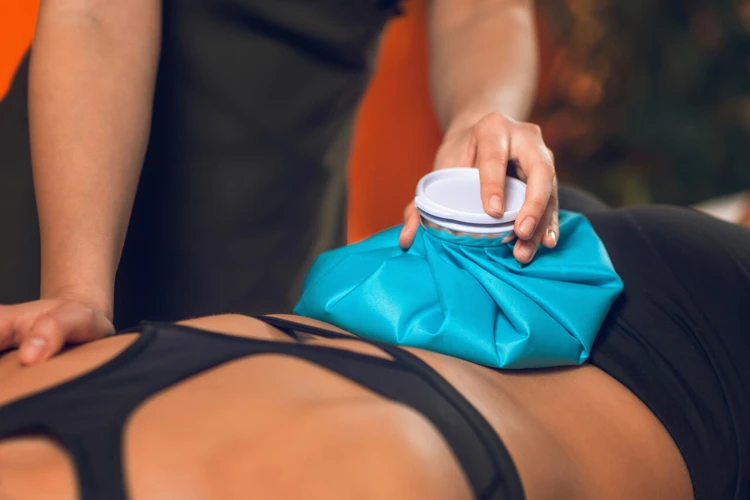
Massage is a powerful tool for relieving the pain associated with a herniated disc. Massage can help improve blood flow to the area, release tension in the muscles, and reduce inflammation. Additionally, massage can help relax the muscles that surround the herniated disc and reduce pressure on the disc. The result is a decrease in pain and a greater range of motion. Massage can also help reduce stress, which can be a contributing factor to the onset of a herniated disc.
Massage for a herniated disc can also help improve posture. Posture is important for the spine to remain in its natural alignment. Poor posture can be a contributing factor to a herniated disc. Massage can help relax the muscles, release tension, and help the body maintain proper posture.
Finally, massage can help reduce stress levels, which can provide an overall sense of well-being. When we are stressed, our body releases hormones that can cause pain and inflammation. Massage can help reduce these hormones, resulting in less pain and inflammation. This can help reduce the symptoms of a herniated disc and improve quality of life.
In conclusion, massage provides numerous benefits for those suffering from a herniated disc. Massage can help reduce pain, inflammation and stress levels, improve posture, and provide an overall sense of well-being. Therefore, massage is an excellent natural therapy to consider for those with a herniated disc.
Safety Considerations

Never massage directly over the herniated disc. Massaging the area around the disc can help to reduce inflammation and tension, but it is important to avoid placing direct pressure on the disc itself.
Be gentle. Massage should be gentle and slow, and the pressure should be light. It is not necessary to press down deeply.
Be aware of signs of increased pain. If the pain increases during the massage, stop immediately and consult a doctor.
Do not massage if there is an infection. Massage should not be performed if the area is infected or inflamed.
Do not massage if the area is swollen. If the area is swollen, it is important to wait until the swelling has gone down before performing massage.
Avoid massage if there is numbness or tingling. If the area is numb or tingling, massage should be avoided until the sensation has returned to normal.
Consult a doctor before starting a massage. It is important to consult a doctor before beginning any massage therapy to ensure it is safe and appropriate for the individual.
Additional Treatments for Herniated Discs

- Medication: Your doctor may prescribe medications to help reduce inflammation, manage pain, and relax the muscles around the disc.
- Physical Therapy: A physical therapist can help you strengthen the muscles around the affected disc and improve your posture.
- Corticosteroid Injections: Corticosteroids may be injected into the area around the herniated disc to reduce inflammation.
- Surgery: In some cases, surgery may be necessary to remove a herniated disc or repair any damage to the nerves.
- Chiropractic Care: Chiropractic care may help reduce pain and improve mobility by realigning the vertebrae in the spine.
Conclusion
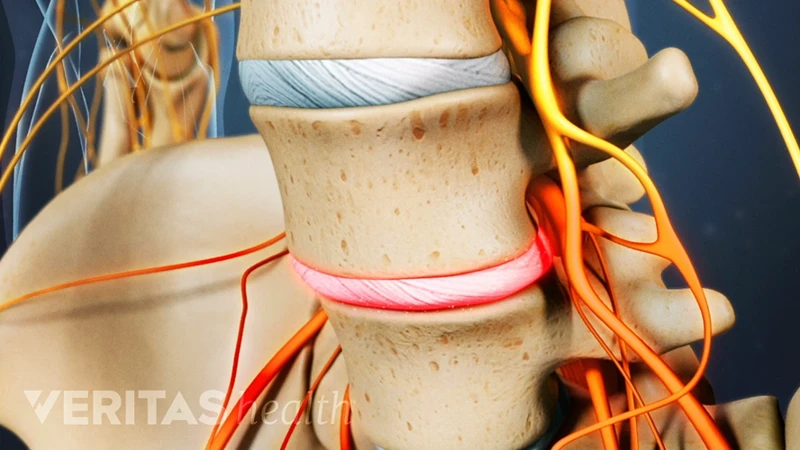
Massaging a herniated disc is a great way to reduce pain and improve mobility. While it is not a complete cure for the condition, it can be an effective method for short-term relief. The most important thing to remember when massaging a herniated disc is to be gentle and to not press too hard on the affected area. Massage techniques such as Swedish massage, trigger point therapy, and acupressure can be used to reduce pain and improve mobility. Additionally, stretching, strengthening exercises, and proper posture can help to reduce the symptoms of a herniated disc. By using these techniques, it is possible to relieve pain and improve mobility naturally.
References
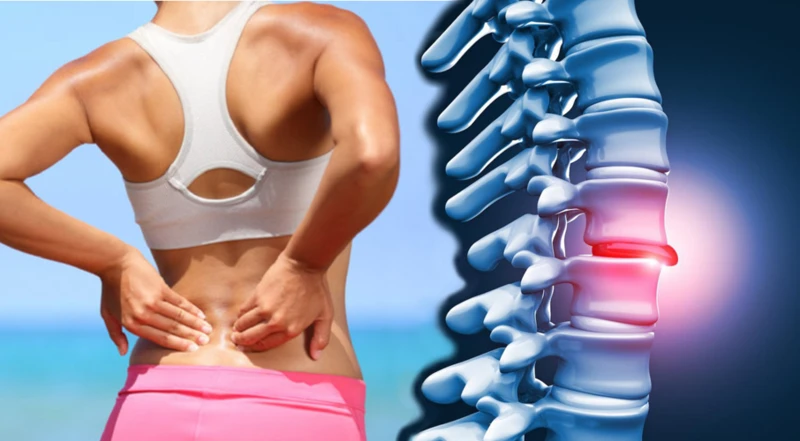
- Bertin, J. et al. (2013). ‘Low back pain and sciatica: a consensus regarding current management’. Scandinavian Journal of Pain 4: 127-40. https://www.sciencedirect.com/science/article/pii/S1877406612000966
- Dagenais, S. et al. (2010). ‘Evidence-informed management of chronic low back pain with massage’. The Spine Journal 10: 918-929. https://www.sciencedirect.com/science/article/pii/S1529943010000821
- Shah, S. et al. (2015). ‘Effectiveness of massage therapy for subacute and chronic low back pain: a systematic review and meta-analysis’. Evid Based Complement Alternat Med 2015: 598-609. https://www.ncbi.nlm.nih.gov/pmc/articles/PMC4417772/
- Youm, T. et al. (2015). ‘Massage Therapy for Low Back Pain’. JAMA 313: 1291-1292. https://jamanetwork.com/journals/jama/fullarticle/2132197
Massage Techniques for Herniated Discs
- Friction Massage: This is a deep tissue massage technique that is used to break up adhesions and scar tissue in the muscles and connective tissue around the herniated disc. This type of massage is performed by pressing deeply into the affected area and moving in a circular motion.
- Myofascial Release: This is a massage technique that involves applying sustained pressure to the affected area to release tension in the muscles and fascia. This type of massage can help to reduce inflammation and pain associated with herniated discs.
- Trigger Point Therapy: This is a massage technique that focuses on releasing tight areas in the muscles and connective tissue. Trigger points are areas of tightness and tension that can cause pain and discomfort when they are pressed or manipulated. By releasing these points, pain and tension can be relieved.
- Soft Tissue Massage: This is a massage technique that involves gently manipulating the muscles and connective tissue to reduce tension and improve flexibility. This type of massage can be used to reduce tension and pain associated with herniated discs.
- Acupressure: This is a massage technique that involves applying pressure to specific points on the body to relieve pain and tension. Acupressure can be used to reduce pain and inflammation associated with herniated discs.
These massage techniques can be used in combination to help relieve pain and discomfort associated with herniated discs. Regular massage can also help to improve circulation and mobility in the affected area.
Frequently Asked Questions
What Causes Herniated Discs?
- Injury – Herniated discs can be caused by injury from a fall, sudden movement, or a car accident.
- Age-related wear and tear – As we age, the discs in our spine start to lose their elasticity and become more prone to herniation.
- Excessive weight – Being overweight places additional stress on the spine and can cause the discs to herniate.
- Poor posture – Poor posture, such as slouching or sitting in a chair for long periods of time, can also cause herniated discs.
What are the Benefits of Massage for Herniated Discs?
Massage therapy can be an effective treatment for herniated discs, providing a variety of benefits. It can help reduce pain and relax tense muscles, improve circulation and flexibility, and promote healing. Massage can also help relieve stress and anxiety, which can worsen the pain associated with a herniated disc. In addition, massage can improve sleep quality, helping to restore the body’s natural healing processes. Ultimately, massage can help reduce the pain and discomfort associated with a herniated disc and promote a faster recovery.
How Often Should I Massage My Herniated Disc?
Massaging a herniated disc is a great natural way to relieve pain and discomfort. However, it is important to be mindful of how often you are massaging your herniated disc. Generally, it is recommended to massage your herniated disc for 5-10 minutes, 2-3 times per day. This can be done before, during, or after activities in order to help alleviate pain. Additionally, foam rolling and stretching can help reduce tension in the area.
It is important to note that massaging a herniated disc too often can lead to further irritation, so be sure to listen to your body and take breaks in between massage sessions.
Are there any risks associated with massaging a herniated disc?
- Nerve damage: Massaging a herniated disc can cause nerve damage if done incorrectly. This can result in pain, numbness, tingling, and other neurological symptoms.
- Muscle strain: Massaging a herniated disc could lead to muscle strain and other soft tissue injuries. This can cause localized pain and discomfort.
- Inflammation: Massaging a herniated disc can cause inflammation and irritation of the surrounding tissue, leading to further discomfort.
- Aggravation of symptoms: Massaging a herniated disc can aggravate existing symptoms, such as pain and discomfort, leading to further pain and discomfort.
These risks can be minimized by seeking the advice of a qualified health professional before attempting to massage a herniated disc. It is important to use proper technique and to be gentle when massaging the area.
What Types of Massage Techniques are Best for Herniated Discs?
Deep tissue massage and trigger point therapy are the two most common massage techniques recommended for herniated discs. Deep tissue massage helps to reduce muscle tension, improve circulation, and reduce inflammation. Trigger point therapy is used to release tight muscle knots, reduce pain, and restore range of motion. Dynamic stretching, sports massage, and myofascial release can also be beneficial for herniated discs. Other treatments, such as hot and cold therapy, can be used in conjunction with massage for further relief.
Conclusion

Massaging a herniated disc is an effective and natural way to reduce pain and discomfort. By applying pressure, heat, and movement to the area, you can help to stretch and relax the muscles, reducing pressure on the herniated disc. Additionally, massage can help to encourage the flow of blood and nutrients to the area, aiding in healing and reducing inflammation. Before beginning any massage therapy, however, it is important to consult with a doctor to ensure that massage is an appropriate treatment for your particular condition.
References


